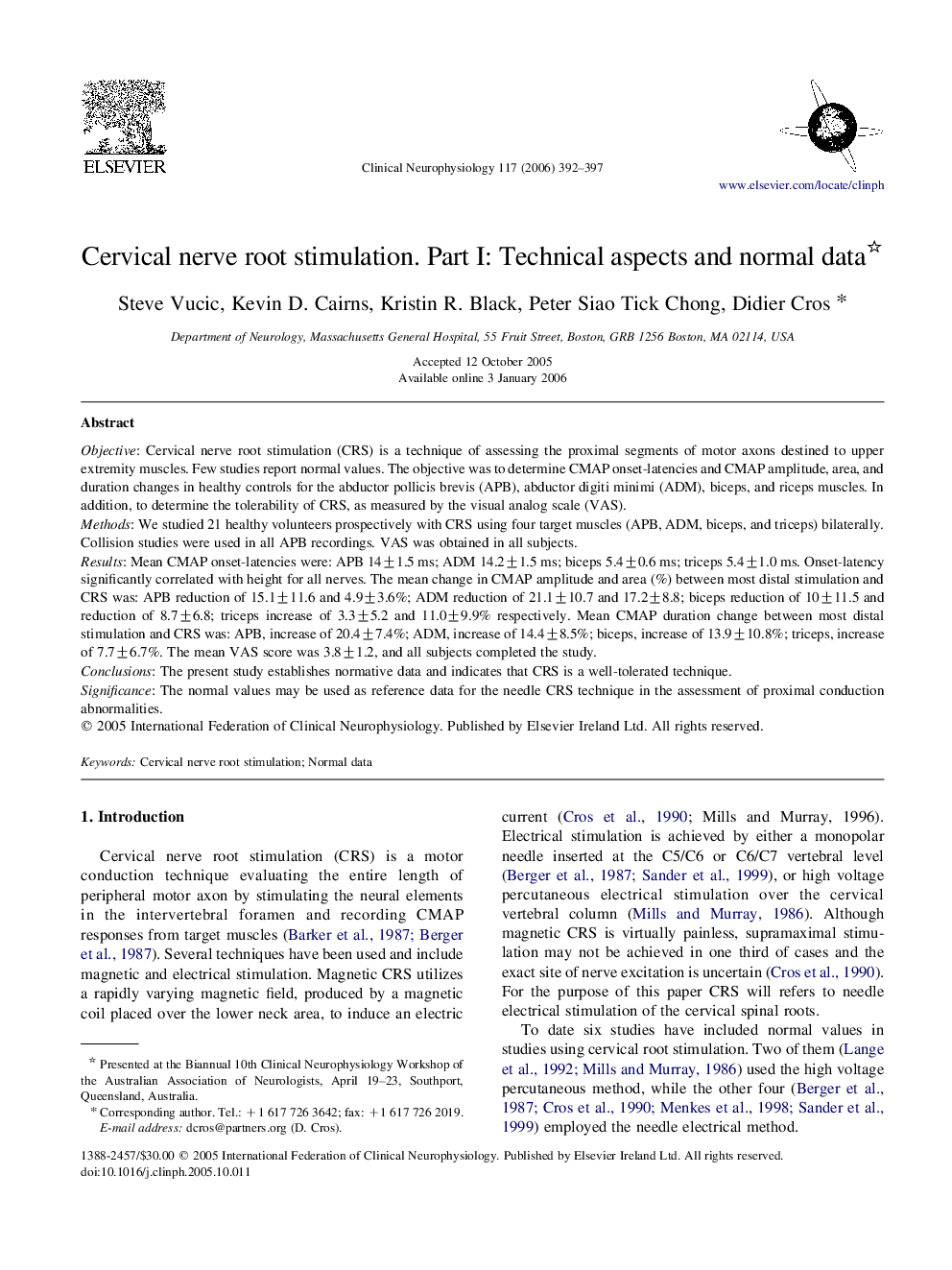| Article ID | Journal | Published Year | Pages | File Type |
|---|---|---|---|---|
| 3048145 | Clinical Neurophysiology | 2006 | 6 Pages |
ObjectiveCervical nerve root stimulation (CRS) is a technique of assessing the proximal segments of motor axons destined to upper extremity muscles. Few studies report normal values. The objective was to determine CMAP onset-latencies and CMAP amplitude, area, and duration changes in healthy controls for the abductor pollicis brevis (APB), abductor digiti minimi (ADM), biceps, and riceps muscles. In addition, to determine the tolerability of CRS, as measured by the visual analog scale (VAS).MethodsWe studied 21 healthy volunteers prospectively with CRS using four target muscles (APB, ADM, biceps, and triceps) bilaterally. Collision studies were used in all APB recordings. VAS was obtained in all subjects.ResultsMean CMAP onset-latencies were: APB 14±1.5 ms; ADM 14.2±1.5 ms; biceps 5.4±0.6 ms; triceps 5.4±1.0 ms. Onset-latency significantly correlated with height for all nerves. The mean change in CMAP amplitude and area (%) between most distal stimulation and CRS was: APB reduction of 15.1±11.6 and 4.9±3.6%; ADM reduction of 21.1±10.7 and 17.2±8.8; biceps reduction of 10±11.5 and reduction of 8.7±6.8; triceps increase of 3.3±5.2 and 11.0±9.9% respectively. Mean CMAP duration change between most distal stimulation and CRS was: APB, increase of 20.4±7.4%; ADM, increase of 14.4±8.5%; biceps, increase of 13.9±10.8%; triceps, increase of 7.7±6.7%. The mean VAS score was 3.8±1.2, and all subjects completed the study.ConclusionsThe present study establishes normative data and indicates that CRS is a well-tolerated technique.SignificanceThe normal values may be used as reference data for the needle CRS technique in the assessment of proximal conduction abnormalities.
